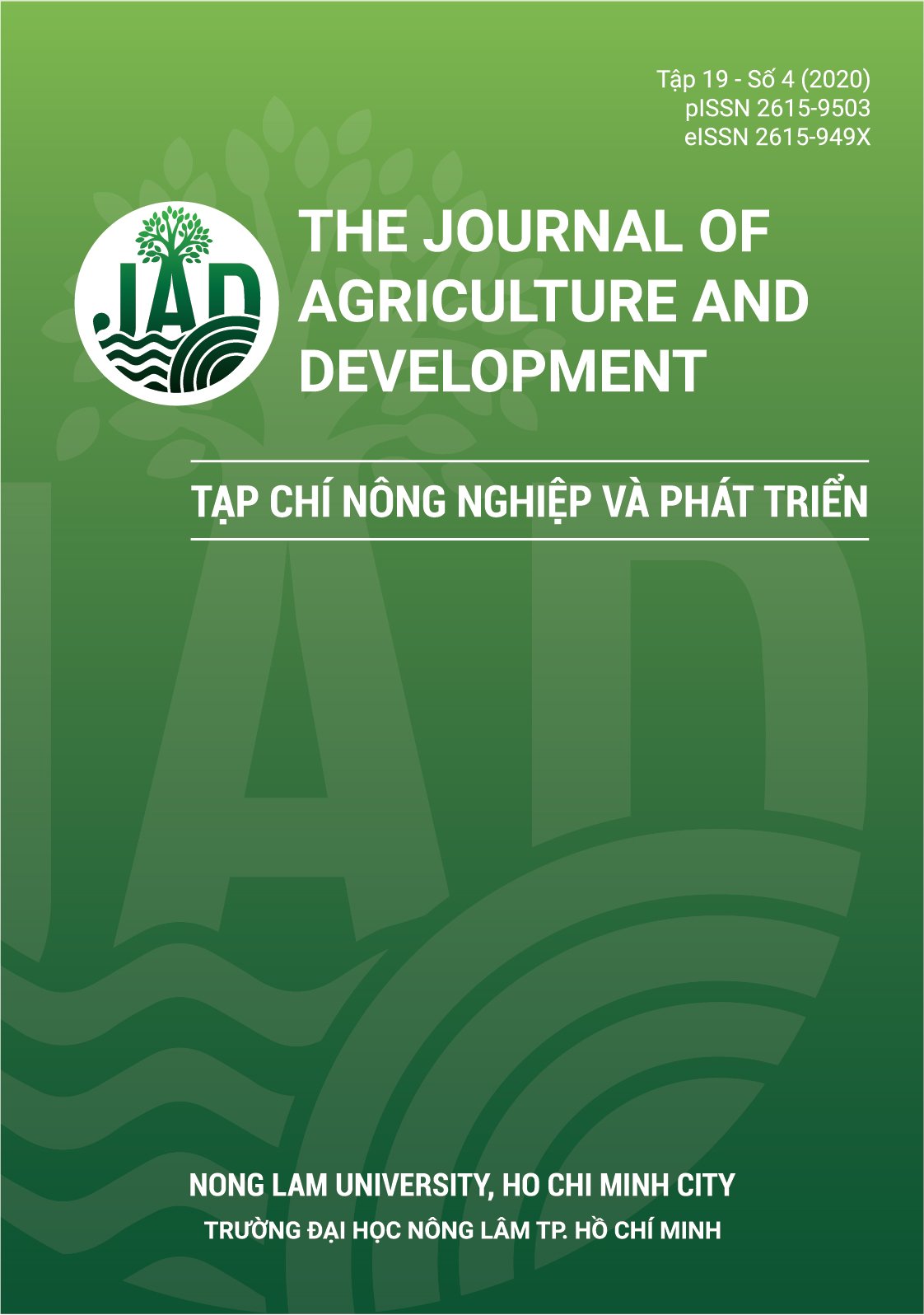Phytochemical analysis of Ardisia silvestris leaf extracts and their antioxidant and antibacterial activities
Main Article Content
Abstract
The phytochemical analysis and antibacterial and antioxidant activity of Ardisia silvestris extracts were carried out. The bioactive compounds of Ardisia silvestris leaves were extracted with petroleum ether, ethyl acetate, ethanol and water by immersion and microwave method. The DPPH method was used to determine the antioxidant activity of Ar-disia silvestris extracts. The antibacterial properties of Ardisia silvestristested against of Staphylococcu saureus,Samonellasp., and Escherichia coli were determined by using agar diffusion method. The agar diffu-sion method was used to determine the antibacterial effects of both plant extracts on the test organisms. The results showed that Ardisia silvestris leaves contained compounds such as essential oils, fats, alka-loids, flavonoids, coumarins, tannins, anthocyanoids, carotenoids, organicacids, reducing agents, proanthocyanidins, saponins and anthraquinones. Ardisia silvestris leaves had a total polyphenol content of 0.26% dry mat-ter, tannin of 8.8%, and a total flavonoid of 1.44 mg/g. The ethyl acetate extract and water extract of the leaves had the antioxidant activity and were 4.2 and 4.4 times lower than ascorbic acid, respectively. The ethyl acetate extract of Ardisia silvestris had the highest oxidative activity. The zone of inhibition of the plant extract diameters at the concentra-tion of 100μl/ml ranged between 9.67mm and 20.67mm for ethyl acetate and ethanol extracts, respectively on E.coli. Similarly, the zones of in-hibitionof ethyl acetate and ethanol extracts diameters were 14.67 and 15.33 mm, respectively onSamonellasp., however, it was not shown for Staphylococus aureus.
Article Details
References
Al-Abd, N. M., Nor, Z. M., Mansor, M., Zajmi, A., Hasan, M. S., Azhar, F., & Kassim, M. (2017). Phytochemical constituents, antioxidant and antibacterial activities of methanolic extract of Ardisia elliptica. Asian Pacific Journal of Tropical Biomedicine 7(6), 569-576. https://doi.org/10.1016/j.apjtb.2017.05.010
Bhattacharyya, P., Kumaria, S., Diengdoh, R., & Tandon, P. (2014). Genetic stability and phytochemical analysis of the invitro regenerated plants of Dendrobium nobile Lindl., an endangered medicinal orchid. Meta Gene 2, 489-504. https://doi.org/10.1016/j.mgene.2014.06.003
Chang, C. C., Yang, M. H., Wen, H. M., & Chem, J. C. (2002). Estimation of flavonoid total content in propolis by two complementary colorimetric methods. Journal of Food and Drug Analysis 10(3), 178-182. https://doi.org/10.38212/2224-6614.2748
Dai, J., & Mumper, R. J. (2010). Plant phenolics: extraction, analysis and their antioxidant and anticancer properties. Molecules 15(10), 7313-7352. https://doi.org/10.3390/molecules15107313
Do, T. L. (2004). Vietnamese medicinal plants and herbs. Ha Noi, Vietnam: Medical Publishing House.
Fu, L., Xu, B. T., Xu, X. R., Gan, R. Y., Zhang, Y., Xia, E. Q., & Li, H. B. (2011). Antioxidant capacities and total phenolic contents of 62 fruits. Food Chemistry 129(2), 345-350. https://doi.org/10.1016/j.foodchem.2011.04.079
Giang, K. T., Nguyen, M. T., Pham, H. V., Pham, D. T. H., & Duez, P. (2011). Effect of quality of material on polyphenol content and antibacterial activity of pH tea varieties. Journal of Science and Development 9(2), 258-264.
Grotewold, E. (2007). The science of flavonoids. New York, USA: Springer Publishing House.
Kikuzaki, H., Hisamoto, M., Hirose, K., Akiyama, K., & Taniguchi, H. (2002). Antioxidant properties of ferulic acid and its related compounds. Journal of Agricultural and Food Chemistry 50(7), 2161-2168. https://doi.org/10.1021/jf011348w
Kobayashi, H., & de Mejia, E. (2005). The genus Ardisia: a novel source of health-promoting compounds and phytopharmaceuticals. Journal of Ethnopharmacol 96(3), 347-354. https://doi.org/10.1016/j.jep.2004.09.037
Le, T. M., Nguyen, T. H, Pham, T. T., Nguyen T. H, & Le, T. L. C. (2005). Methods of analysis for fermentation technology. Hanoi, Vietnam: Science and Technics Publishing House.
Ling, L. F., & Subramaniam, S. (2007). Biochemical analyses of Phalaenopsis violacea orchid. Asian Journal Biochemistry 2(4), 237-246.
MOH (Ministry of Health) (2010). Vietnam pharmacopoeia IV. Ha Noi, Vietnam: Medical Publishing House.
Nguyen, P. K. T. (2007). Methods of isolation of organic compounds. Ho Chi Minh City, Vietnam: National University Publishing House.
Nguyen, T. P. (1999). Handbook for searching and identifying families of angiosperms in Vietnam. Ha Noi, Vietnam: Agricultural Publishing House.
Tran, L. T. K (2002). Study on chemical composition and biological activity of some Ardisia species of Myrsinaceae family in Vietnam (Unpublished Doctoral dissertation). Vietnam Academy of Science and Technology, Ha Noi, Vietnam.
Zhu, H., Wang, Y., Liu, Y., Xia, Y., & Tang, T. (2009). Analysis of flavonoids in Portulaca oleracea L. by UV- Vis spectrophotometry with comparative study on different extraction technologies. Food Analytical Methods 3(2), 90-97. https://doi.org/10.1007/s12161-009-9091-2








